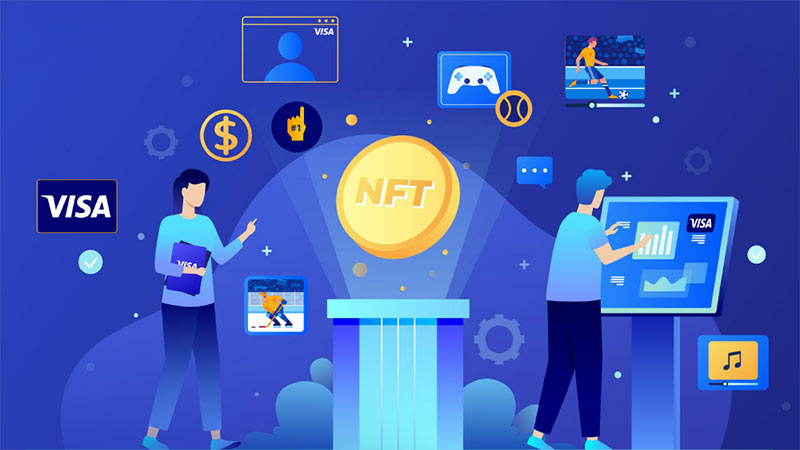In the ever-evolving landscape of digital technology, one concept has recently gained remarkable prominence – Non-Fungible Tokens (NFTs). These unique digital assets have revolutionized the way we perceive ownership and value in the digital realm. In this blog, we will delve into the intricacies of NFTs, examining their origins, applications, and the impact they are having on various industries
.
Understanding NFTs: What Are They?
Non-Fungible Tokens, or NFTs, are digital assets that represent ownership of a unique item or piece of content using blockchain technology. Unlike cryptocurrencies like Bitcoin or Ethereum, which are fungible and interchangeable, NFTs are one-of-a-kind and indivisible. Each NFT is stored on a blockchain, a decentralized and secure digital ledger, providing indisputable proof of ownership.
The Origin of NFTs
The concept of NFTs has been around since 2014, but it gained widespread recognition and popularity in recent years. The breakthrough came with the launch of Ethereum’s ERC-721 token standard in 2017, which enabled developers to create unique, verifiable digital assets. This standard laid the foundation for the NFT boom we are experiencing today.
Applications and Use Cases
NFTs have found applications in a wide array of industries, transforming the way we think about ownership and digital content monetization. Here are some key areas where NFTs are making an impact:
Digital Art and Collectibles: NFTs have opened up new avenues for digital artists to monetize their work. Artists can create unique digital pieces and sell them as NFTs, with buyers gaining ownership and provable authenticity.
Gaming: NFTs are revolutionizing the gaming industry by allowing players to own in-game assets such as skins, characters, and virtual real estate. Gamers can buy, sell, and trade these assets across various games.
Music and Entertainment: Musicians and content creators are exploring NFTs to sell exclusive access to music, videos, and experiences. This allows artists to connect directly with their fans and control the distribution of their content.
Real Estate: NFTs have the potential to transform the real estate market by representing property ownership and streamlining the buying and selling process, reducing paperwork and intermediaries.
Collectibles and Memorabilia: NFTs are being used to tokenize physical collectibles like sports cards, rare books, and vintage items, providing provenance and ensuring authenticity.
Virtual Worlds and Metaverse: As the concept of metaverse gains traction, NFTs are at the forefront, enabling users to own virtual land, buildings, and assets within these digital environments.

Challenges and Concerns
While NFTs offer exciting possibilities, they also come with challenges and concerns:
Environmental Impact: The energy consumption of blockchain networks like Ethereum, where many NFTs are minted and traded, has raised concerns about its carbon footprint. Solutions like Ethereum 2.0 are in development to address this issue.
Copyright and Ownership: NFT ownership does not necessarily confer copyright or intellectual property rights. This has led to disputes over the sale of NFTs representing copyrighted content.
Market Volatility: NFT markets can be highly speculative and volatile, with prices for some assets soaring to astronomical levels before crashing.
Scams and Frauds: The unregulated nature of NFT markets has attracted scams and frauds, making it essential for buyers to exercise caution.






